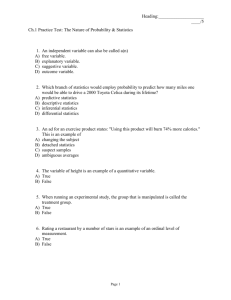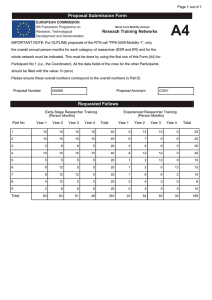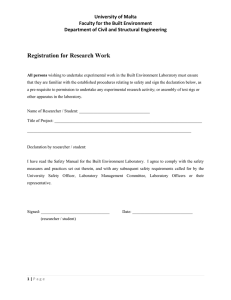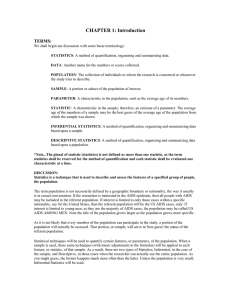Tips for Tips for Reading Journal Articles Reading Journal Articles
advertisement
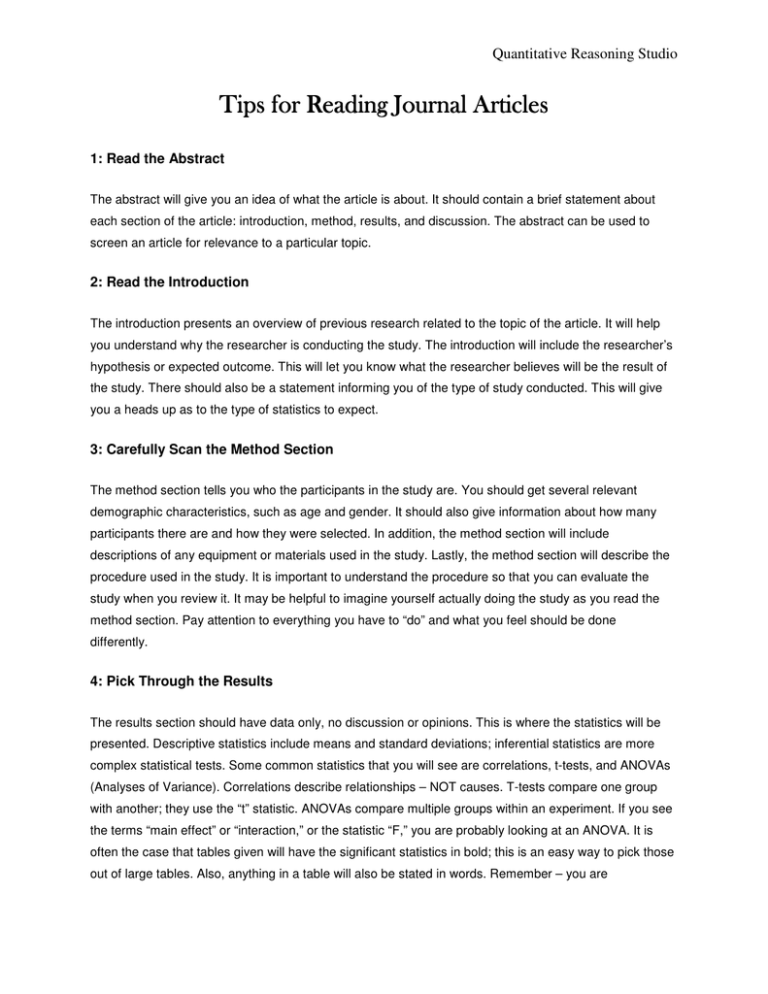
Quantitative Reasoning Studio Tips for Reading Journal Articles 1: Read the Abstract The abstract will give you an idea of what the article is about. It should contain a brief statement about each section of the article: introduction, method, results, and discussion. The abstract can be used to screen an article for relevance to a particular topic. 2: Read the Introduction The introduction presents an overview of previous research related to the topic of the article. It will help you understand why the researcher is conducting the study. The introduction will include the researcher’s hypothesis or expected outcome. This will let you know what the researcher believes will be the result of the study. There should also be a statement informing you of the type of study conducted. This will give you a heads up as to the type of statistics to expect. 3: Carefully Scan the Method Section The method section tells you who the participants in the study are. You should get several relevant demographic characteristics, such as age and gender. It should also give information about how many participants there are and how they were selected. In addition, the method section will include descriptions of any equipment or materials used in the study. Lastly, the method section will describe the procedure used in the study. It is important to understand the procedure so that you can evaluate the study when you review it. It may be helpful to imagine yourself actually doing the study as you read the method section. Pay attention to everything you have to “do” and what you feel should be done differently. 4: Pick Through the Results The results section should have data only, no discussion or opinions. This is where the statistics will be presented. Descriptive statistics include means and standard deviations; inferential statistics are more complex statistical tests. Some common statistics that you will see are correlations, t-tests, and ANOVAs (Analyses of Variance). Correlations describe relationships – NOT causes. T-tests compare one group with another; they use the “t” statistic. ANOVAs compare multiple groups within an experiment. If you see the terms “main effect” or “interaction,” or the statistic “F,” you are probably looking at an ANOVA. It is often the case that tables given will have the significant statistics in bold; this is an easy way to pick those out of large tables. Also, anything in a table will also be stated in words. Remember – you are Quantitative Reasoning Studio encouraged to see your professor or the Quantitative Reasoning Consultant for help interpreting the statistics. 5: Read the Discussion The discussion is where you will find the researcher’s interpretation of the results. Also, the author should answer the research question. Remember, you should evaluate the data to form your own conclusions; don’t just accept what the author concludes without looking for yourself. The discussion will present limitations of the study and areas for future research.
